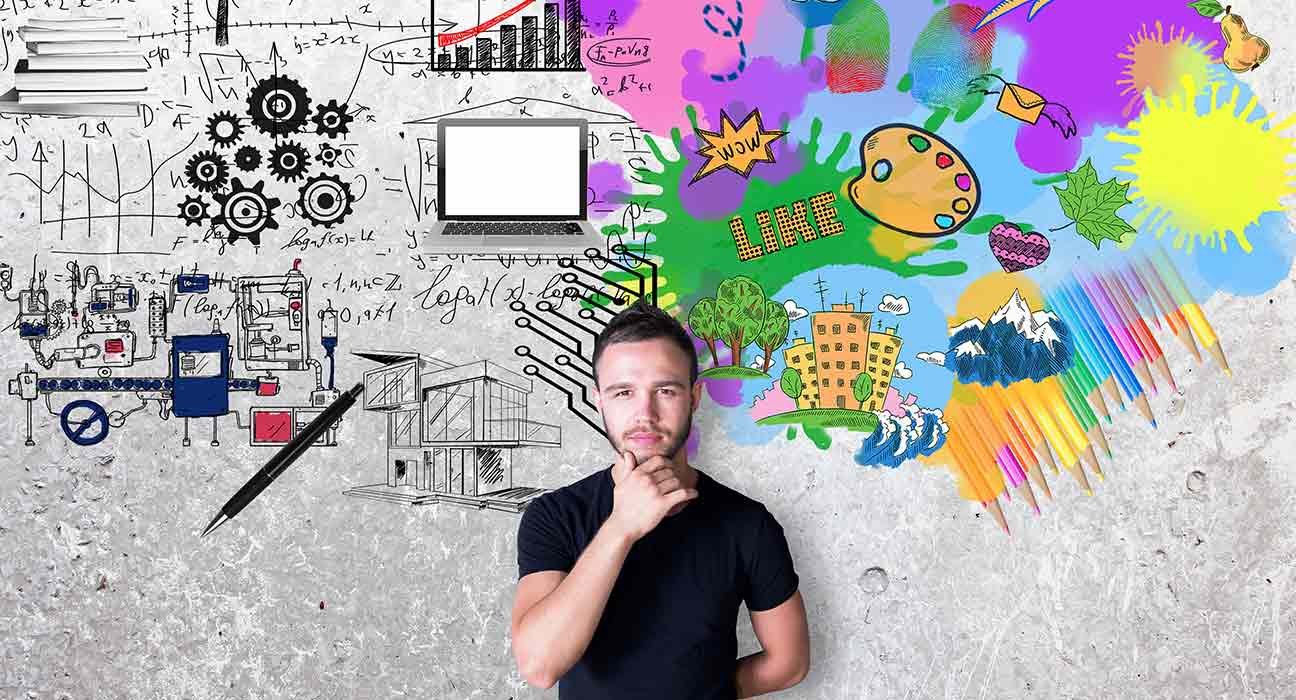Creativity is the process and ability of an individual to think, create, reason, etc. Indifferent and approachable ways. Creative individuals produce their work, ideas, and theories in an artistic or the best expressive way possible. Creativity refers to the mental processing of an individual in leading to original work of presentation, innovation, presentation, etc. Creativity itself doesn’t have a proper or particular definition. It is profound and novel every day everyone creates new ideas, meanings, and experiences.
Originality and functionality are the most important factors of creativity.
Psychologists View:
According to Mihaly Csikszentmihalyi, creativity can be portrayed in different areas and aspects. People have different, unusual, and unique thoughts and ideas. Individuals make beautiful and social interactions interesting in various factors for showing insightful views and perspectives.
Through art, people make achievements such as being different or innovative like Thomas Edison and Pablo Picasso. Creative people have a massive level of intellectual and physical energy in creating and reflecting their thoughts. Psychologists have assumed that intelligence plays a critical role in creativity. Also longitudinal study says not all high IQ people are creative.
Creative people do not have a specific plan or time they can work on anything and be special in every detail.
Psychology counts in the big five factors of creativity:
- Openness: people with this trait are more open to new experiences, and ideas and they are interested in learning new things meeting new people, etc.
- Consciousness: these people are more organized and have a proper plan to execute or create self-awareness and self-control.
- Extroversion: extroversion is an individual behavior of being talkative, involved in things, excitable, socially active, etc. These people would see their love towards art in socially accepted situations and social crowds etc. These tend to be more energetic and full of positivity throughout.
- Agreeableness: this personality trait of a creative individual involves most of the other big five factors, including openness, conscientiousness, extroversion, neuroticism, etc. These people agree to disagree with every aspect of livelihood. Get along. Well, care for others needs to be socially and emotionally intelligent.
- Neuroticism: this kind of individual is characterized as emotionally unstable or irritable, and has anxiety, doubt, and other negative feelings. These individuals have affected relationships.
The Evolution of Creativity
In the past, people believed that creativity was a gift from God that was employed mostly for creative endeavours. In later days, psychologists stepped deep into creativity, where Freud believed that the state of stress between the reality of life and consciousness, including having intellectual feelings is the cause for creativity where pre-conscious thoughts are loose and create the source of freshness and originality. Currently psychological approach toward creativity has various ways directions and interests. Cognitive psychologists study how cognitive actions such as analogy, concept combination, problem-solving, etc. create new stimulates to the process of therapy.
According to the psychologist, creativity is possessed by a certain domain, and one particular specialist in the highest domain is believed to encourage creativity in others. It is not just in colors or pen and sketches but in various aspects of seeing, writing, speaking, documenting, etc.
Creativity has its own Darkside. Our evil side of creativity is represented by cultural and technical growth, which many people think is linked to illnesses, suicide, drug misuse, malpractice, and more. They also say excessive creativity can cause an absorption of one’s interest or knowledge etc. Social determination in these individuals is lacking due to their perspective of life and views of life.
Proven Theories
Implications of theory of creativity. In several ways, creativity is applied in clinical fields where creative activities such as art, music, dance, drama, etc. Are increasingly effective in nonclinical areas too. Art helps in self-identification, the discovery of interest, and consciously finding the suffering, disability factors, etc. Art is connected in individuals through culture and their intellectual happiness which is deeply spiritual or religious in their experiences. The other areas such as child rearing and education art and creativity facilitate more cognitive flexibility, divergent thinking, motivation, and external reward factors in an individual. corporate world as a leading business. Setting creativity works as brainstorming sessions where togetherness of people, ideas, environment, and other factors forward towards a healthy work-life and profitable thinking.
Nature fully endows people, other cruel creatures, with inventiveness, and remoteness. By participating in this unselfish action, people connect numerous areas of psychology, such as personality, clinical psychology, neurology, social psychology, organisational psychology, and more. Creativity can be part of both specific and general domains and the creative side is negative. It also can be blended and molded into the best basis in the environment to make it positive.
Many colours, developed thoughts, writing, and more work on creativity, which is a natural stimulant that helps our brain function while staying calm and supporting the beneficial aspects of our daily existence. This balance, which is essential for a fulfilling and lasting existence, resonates with me greatly.
Read more articles related to Creativity
